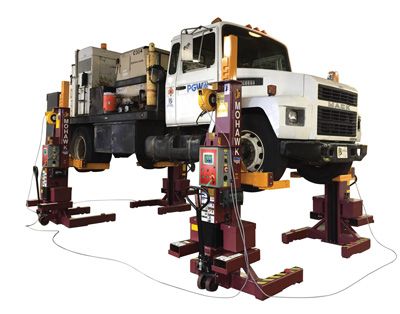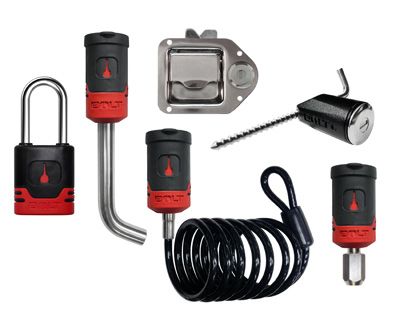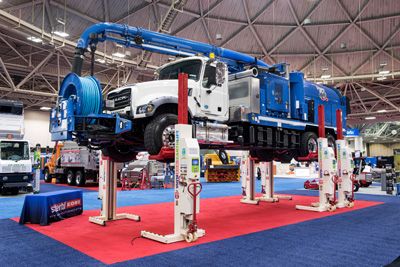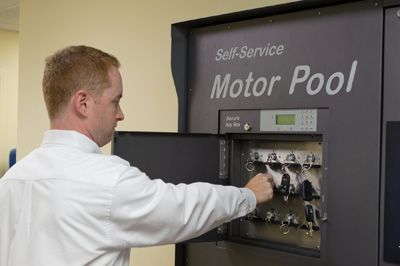What Do AI and Machine Learning Mean for Utility Fleets?
There are some people who still believe artificial intelligence (AI) is no more than sci-fi wizardry. And there are others who tend to view it with blind optimism, as a kind of be-all, end-all for industries of all types. But somewhere in between, AI has taken its true place as just one piece of a much broader technology transformation.
Both AI and machine learning – a field of computer science that enables computers to think intelligently and even “learn” from historical data without specifically being programmed – eventually will make their way to utility fleets, perhaps through relationships with other industries. David Groarke, managing director of Indigo Advisory Group (www.indigoadvisorygroup.com), a new-energy/utilities consulting firm, ticked off some possibilities. These might involve, for example, electric fleet vehicles automatically being charged during off-peak times. Or, they might include the use of telematics to better predict and adjust driver behaviors. Examples abound in other industries, too, such as supply chain and logistics.
As a result, Groarke and others have said, now is the time for utility fleet professionals to take notes, ask questions, be willing to share data for more accurate and strategic insights – and keep pushing the envelope by exploring what-if applications.
“More information is always better,” said Paul Millington, vice president of technology products for Element Fleet Management (www.elementfleet.com). “As experts who are dedicated to fleet, we make it our job to anticipate what insights our customers would be looking for. I’d say keep asking the questions of your fleet management company and others on whether your objectives could be achieved with machine learning.”
Millington and Marius Stroe, Element Fleet’s director of software development, referenced a maintenance management project that uses AI to more efficiently handle vendor authorizations and proposed pricing. Rather than separating out utility fleets, Millington said, incorporating the data into a broader set can reveal different insights, perhaps related to similarities in usage patterns or asset types. That could result in “better recommendations and better understanding for all, regardless of industry,” he said.
Not-So-New Technology
Groarke noted that even though these concepts might seem futuristic, machine learning has been around “for a very long time. The utility industry has been using machine learning in how it operates the grid since the 1970s. But we’re only starting to get really sophisticated big data sets now.”
For example, with more sensors on vehicles, more data can be explored, which can lead to more patterns being recognized and inferences being made. This is especially the case with safety and maintenance, and inroads are being made.
Even so, Groarke said, he’s still seeing some skepticism among certain groups. “They really want to see if the proof is in the pudding, to look at the numbers and see why they should invest in this technology.”
For those groups in particular, he recommended keeping an eye open. The ability to better process data eventually can lead to the ability to make smarter business decisions.
Stroe, meanwhile, referenced the importance of constant dialogue between technology experts and business leaders as the field evolves. Ongoing education is essential on all sides.
“You have to have the technology team explain to business leaders what machine learning is and how it works,” he said. “You also have to have business leaders explain all of the features of the enterprise to the technology team.” In many cases, company technology teams already are exploring these possibilities – but the external conversations haven’t yet taken place.
The experts also urge dialogue with OEMs to help further insights.
“It’s interesting to see how manufacturers are starting to leverage some of this data,” Millington said. “That’s part of the next frontier that fleet managers will need to start thinking about. Fleet management companies have some influence over OEMs, but it’s the client base in the utility space that really has a lot of influence.”
About the Author: Fiona Soltes is a longtime freelance writer based just outside Nashville, Tenn. Her regular clients represent a variety of sectors, including fleet, engineering, technology, logistics, business services, disaster preparedness and material handling. Prior to her freelance career, Soltes spent seven years as a staff writer for The Tennessean, a daily newspaper serving Nashville and the surrounding area.
*****
First Steps for AI and Machine Learning
Don’t know where to begin when it comes to artificial intelligence as it relates to your utility’s fleet? David Groarke, managing director of Indigo Advisory Group, offered a few suggestions:
- Seek to understand the AI and machine learning solutions that already are emerging. This likely will involve looking at other industries and exploring how efforts might translate to utility fleets.
- Do more with the data you already have on hand. Look at the information that sensors are providing. Explore the technology and software that are available. This will help engender trust in – and perhaps build excitement about – what’s possible.
- Realize the different uses of AI and machine learning will be introduced incrementally. “We’re not in a period of disruption,” Groarke said. “These are changes that are going to take decades.” With that said, there still are elements that can help businesses in the shorter term.












